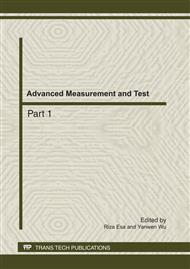p.1089
p.1093
p.1098
p.1104
p.1109
p.1115
p.1123
p.1128
p.1133
Static Friction Research of LIGA-Microstructure: Comparison between Theory and Experiments
Abstract:
Micro electro mechanical system (MEMS) has been increasingly used in military application. For the reliability and specialty of military requirements, the material of the MEMS device is supposed to be metal and the device is moveable. Lithographic, Galvanoforming, Abformung (LIGA) technology capable of producing high aspect ratio structures in metals like nickel is one of the important fabrication technologies in military MEMS. There are many moveable MEMS device like micro-gear and micro-slider producing by LIGA technology. But the moveable devices cannot behave well because of the friction effect. In this paper, an improved elastic-plastic model including roughness effects and an experimental procedure that predict the static friction prosperity of LIGA-processed nickel is proposed. Firstly, we use the 3D optical profilometer to research the surface roughness of LIGA-processed nickel, the surface heights distribution was found to be nearly Gaussian distribution. Secondly, the static friction model, the Kogut-Etsion (KE) model is adopted to obtain the static friction coefficient. Finally, a special designed static friction coefficient measurement apparatus is used to conduct the friction experiments. The results indicate that the surface roughness affects the friction and the smoother surface leads to a higher friction coefficient. Also good agreement was found between simulations and experimental results.
Info:
Periodical:
Pages:
1109-1114
Citation:
Online since:
July 2011
Authors:
Price:
Сopyright:
© 2011 Trans Tech Publications Ltd. All Rights Reserved
Share:
Citation:


